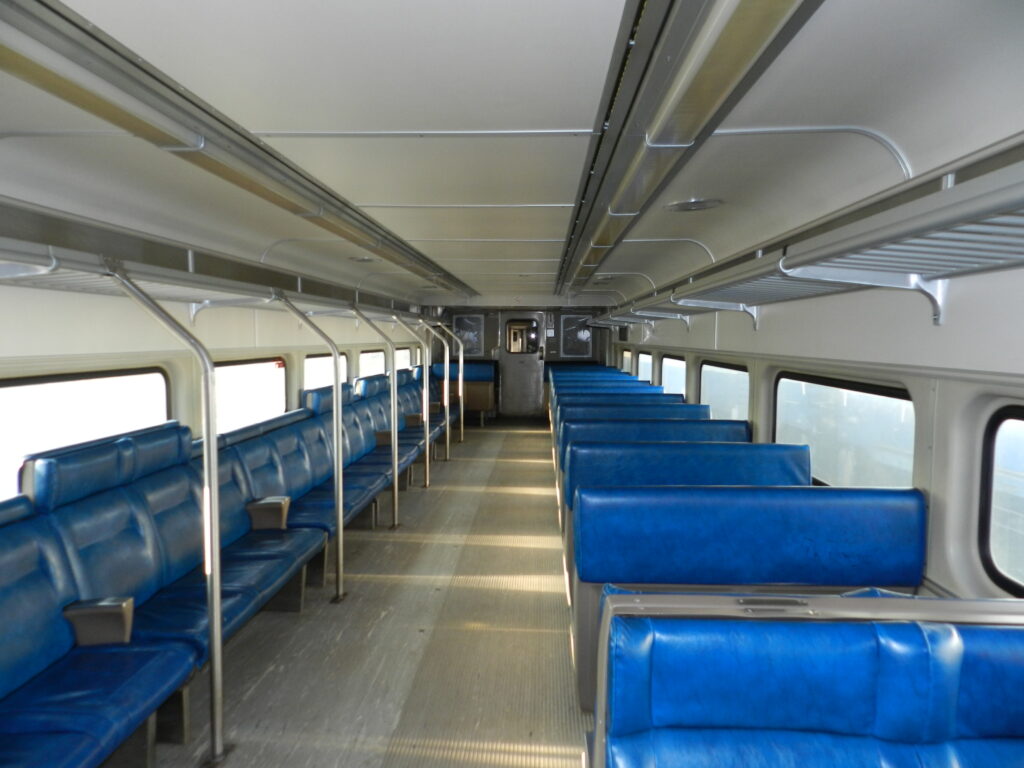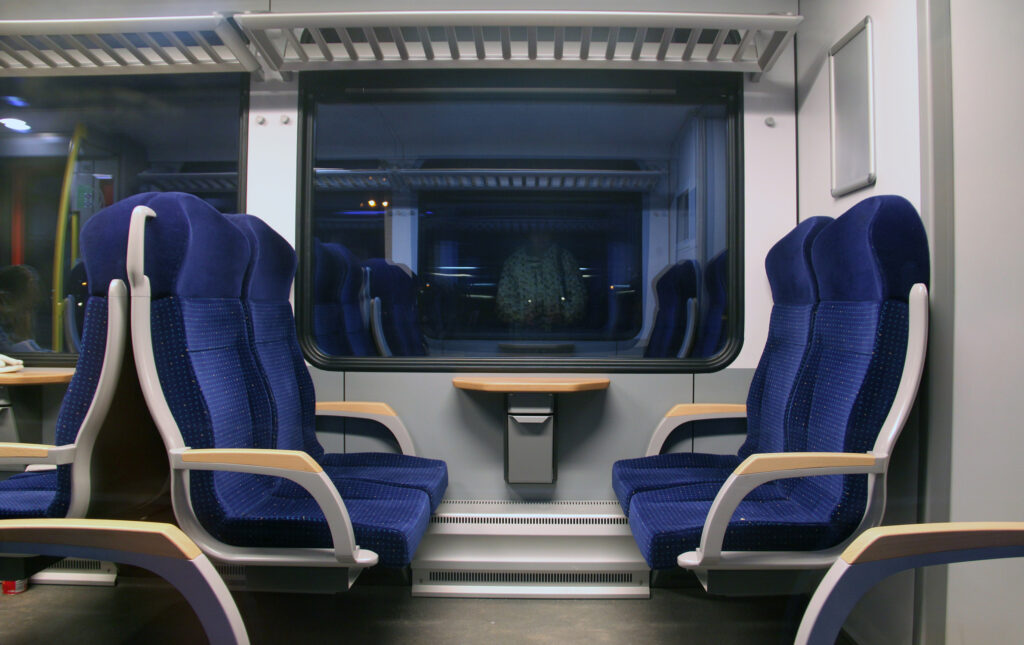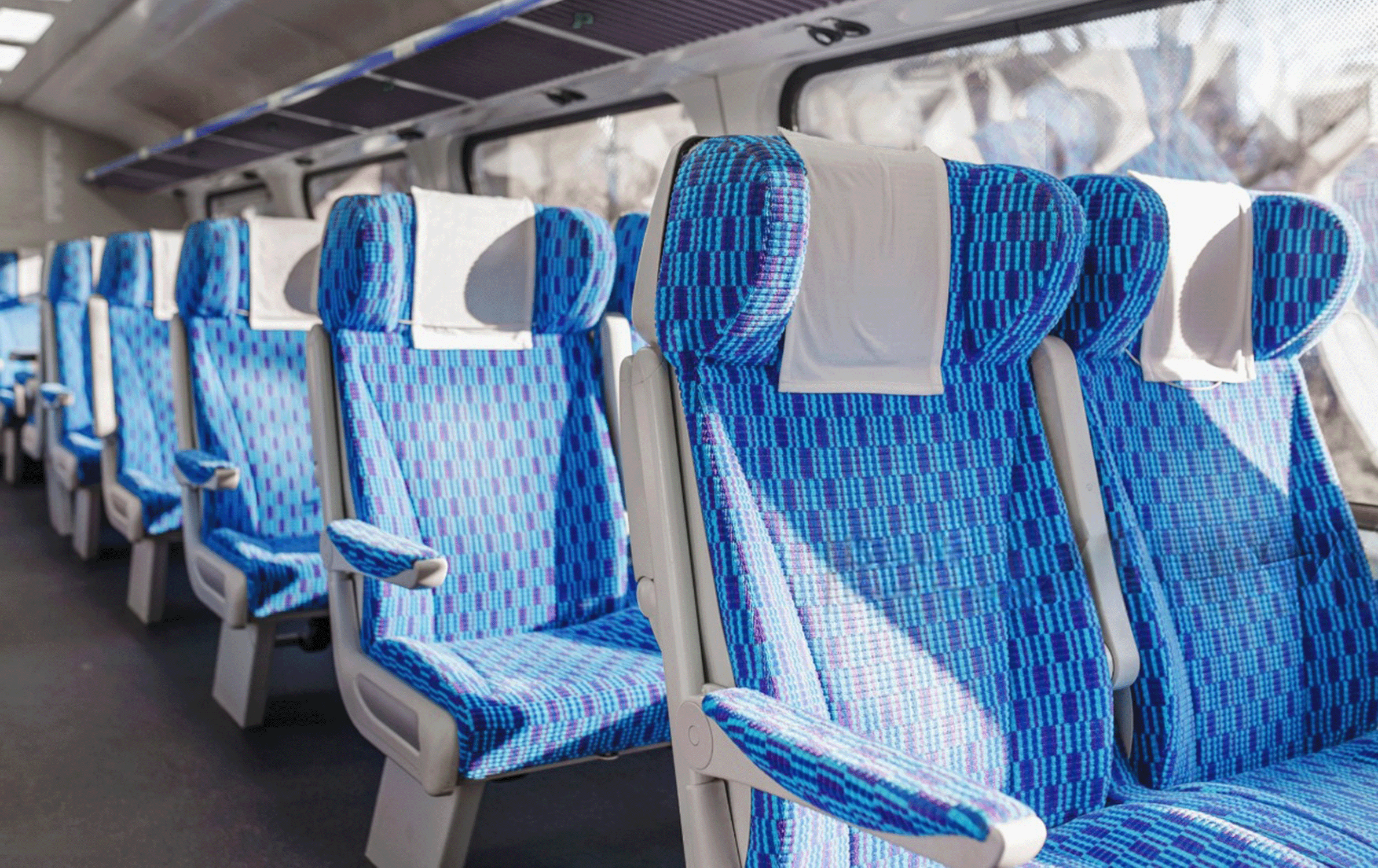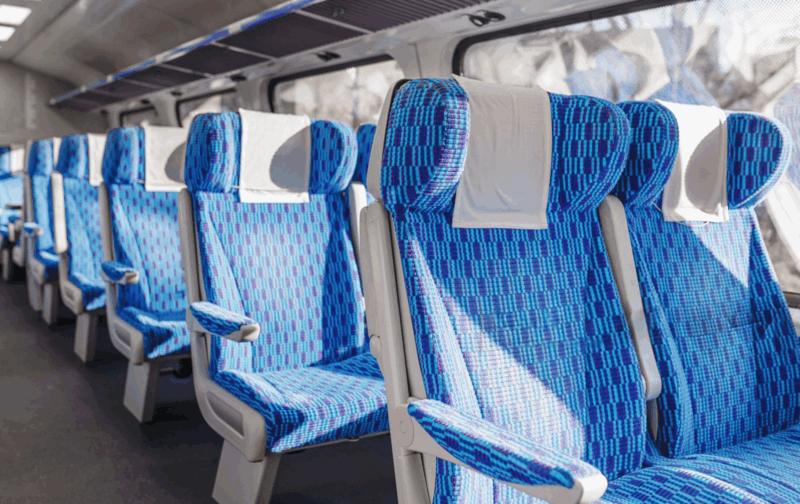In a previous article, we discussed the advantages of Railcar Refurbishment as well as the different levels: Renewal, Modernization and Repurposing. In this article we will take a closer look at the simplest level: Renewal.

Transforming Everyday Travel with Fresh Designs
Passenger railcars, especially commuter cars, endure a lot of wear and tear in their daily operations, many make several round trips a day shuttling hundreds of passengers back and forth between home, work or school. This constant flux of people will take its toll on the interior finishings like flooring and seats.
- Dirt and stains can no longer be removed during regular cleaning and colours begin to fade from UV exposure;
- Colours and patterns begin to feel dated and old because of the colour scheme chosen no longer match current trends;
- Neon colours and busy geometric patterns that were popular in the ‘90s are now highlighting that the interior are over 20 years old.
As components age, they also require more maintenance, putting heavier load on maintenance staff, facilities and schedules.
Cost-Effective revitalization for Reliable Railcars
The ideal candidate for renewal is a passenger car that is still fulfilling its intended role and is fit for purpose but has begun to show signs of age. In this case renewal would provide the most cost-effective level of refurbishment. There is no need for significant changes to any on-board systems or layouts, instead a renewal focuses on replacing only what is necessary and replacing in-kind whenever possible.
Interior Components
Broken or stained interior components are replaced.
High-wear Surfaces
High-wear interior surfaces like flooring and upholstery are replaced, usually in conjunction with an updated colour scheme and new exterior livery.
Reused Components
Reused components undergo a thorough deep-cleaning that can include multi-day soaks, specialized detergents, enzymatic solutions or media / dry ice blasting.
Carbody
The carbody undergoes a detailed inspection and corroded metal, decayed wood (often in plymetal floor panels) and delaminated composites are assessed and repaired or replaced.
In most cases, an obsolescence study is recommended to identify any components or systems that should be upgraded to ensure spare parts availability and simplification of future maintenance activities.
Mastering Component Replacement Challenges
Obsolescence is one of the main challenges during a renewal program. A still functional component should be considered for replacement when spares are no longer available on the market.
In these cases, the challenge is locating a modern equivalent with the closest form-fit and function to avoid impacting nearby components or adjacent systems that will in turn need to be changed.

Partner With SYSTRA Canada’s Experts in Rolling Stock Renewal
If an operator has passenger cars that are still fit for purpose, but showing their age, a renewal type refurbishment could be a budget and schedule-friendly option to breathe some new life into their fleet and extend its useful lifespan. Though renewals do present their share of challenges and obstacles, these can be overcome with the support and guidance of a team with experience in successful rolling stock renewal projects.


 Australia
Australia  Brazil
Brazil  Chile
Chile  China
China  Columbia
Columbia  Denmark
Denmark  Egypt
Egypt  France
France  India
India  Indonesia
Indonesia  Ireland
Ireland  Italy
Italy  Malaysia
Malaysia  New Zealand
New Zealand  Norway
Norway  Panama
Panama  Peru
Peru  Poland
Poland  Portugal
Portugal  Saudi Arabia
Saudi Arabia  Singapore
Singapore  Spain
Spain  South Korea
South Korea  Sweden
Sweden  Taiwan
Taiwan  Thailand
Thailand  Türkiye
Türkiye  United Kingdom
United Kingdom  United States
United States  Vietnam
Vietnam